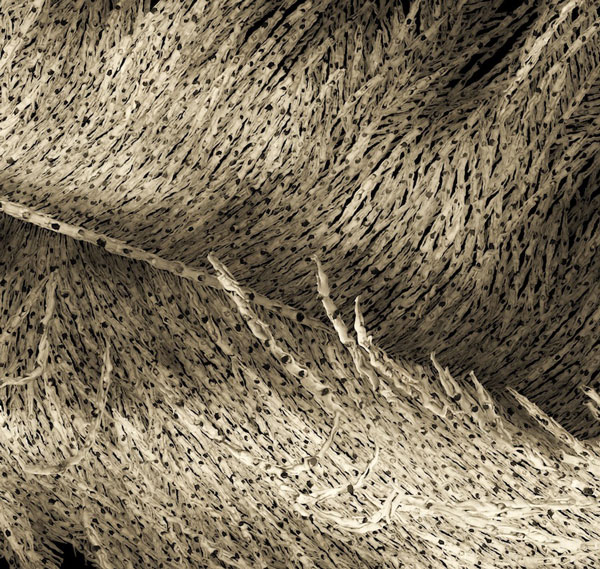For centuries, artists have been intrigued by perception and the workings of the human eye. With optical illusion art, the artist uses various effects to trick the eye and confuse the public’s perception of the world around them.

(Image source: www.widewalls.ch)
The origin of optical illusion art traces back to the 1950’s Op Art movement, where numerous artists focused on creating images that would puzzle the viewer’s perception. These included black and white images that can be perceived in multiple ways and may even make the viewer dizzy trying to distinguish between them.
Op Art has evolved into contemporary art with many artists who create intricate patterns, installations, paintings, and street art playing with our notion of space, time and reality.
Here are some of the most noted contemporary optical illusion artists of today:
Leandro Erlich
Argentinian contemporary artist, Leandro Erlich, is best known for his massive installations, videos and other works that employ optical illusions and sound effects to stir up his audience’s notion of common sense.

(Image source: Leandro Erlich)
Upon first glance, his works may look familiar to the audience; however, on closer inspection they prove to be surprising and unsettling. This manifests itself in a deviation from what’s normal, for instance a boat that floats in the absence of water. What then follows is the audience doubting whether what they see is real or realizing the degree to which their unconscious habits influence the way they view things.
 (Image source: Henriette Desjonquères & Paul Fargues)
(Image source: Henriette Desjonquères & Paul Fargues)
His largest exhibition “Leandro Erlich: Seeing and Believing”, is on display at the Mori Art Museum in Tokyo through April 1, 2018. The exhibit features 44 works spanning 25 years of his career. Each piece aims of ridding the audience of their inertia, habits, preconceived notions and existing wisdom, to prove that the what we see is not all there is to reality. With a newly unclouded vision one can perceive a brand new world.
What’s most interesting about Erlich’s work is the role the audience plays in creating its meaning. Erlich explains, “By design, there is no complete work without the audience. In my work, the audience temporarily becomes an element of the work itself. Their individual participation and experience is a level of involvement that makes them essential to the process. And of course, the ultimate meaning they create and assign is also imperative.”
Angelo Musco
Angelo Musco, another optical illusion artist, creates works that turn reality upside down and run counter to preconceived ideas.
Born in Naples, Italy in 1973, Musco alternated his academic career between the Academia Delle Belle Arti of Naples and the University of Fine Arts in Granada, Spain. Upon completing his studies, he visited New York City a few times and eventually moved to the U.S. on December 8, 1997, a date holding much symbolic significance because it is the Italian date of the Immaculate Conception.

(Image source: Angelo Musco)
The date holds significance because one primary recurring theme in Musco’s work is his experience of a delayed and traumatic birth—one that left him with both physical and subconscious scars for life. Understanding this, not surprisingly, the medium that dominates his work often is the human body.
He weaves and connects masses of naked human bodies to construct works that are both literal and figurative representations of eggs, nests, amniotic fluid and other such inspiration from the miracle of procreation.

(Image source: Angelo Musco)
In his series titled, “The Aves”, Musco creates digital images of feathers floating in midair. The photos exude a weightless, delicate, airy and otherworldly atmosphere. However, if you look closely, you realize these feathers were not freshly plucked from any known bird. Rather, they are constructed from thousands of nude bodies, tangled and woven together in intricate configurations. The series comprises nine feathers, symbolizing the nine months of pregnancy. And, the feathers are part of his latest obsession with what he calls his, “human landscapes inspired by nature’s intricate architecture”.
Edoardo Tresoldi
Italian sculptor, Edoardo Tresoldi, is yet another contemporary artist who plays with optical illusions in his work.
Tresoldi’s work is characterized by a strange duality between the seen and unseen and is characteristically created from wire mesh. The choice of wire mesh as a primary material aims to celebrate the seen and unseen by offering viewers a few brief glimpses of the world between the two.

(Image source: Roberto Conte)
The inherent contradictions of the seen vs. the unseen, industrial vs. poetic, temporary vs. permanent, and classical vs. contemporary, make Tresoldi effective at expressing the intangible. The mesh itself seems to hover between dimensions of reality. And although one might assume metal wire to be a tough and unwieldy material, in the hands of Tresoldi it becomes a material of storytelling, airiness and romantic suggestion.
One of his standout works is titled “Aura”, a two-part floating installation suspended over the halls of Le Bon Marché Rive Gauche in Paris. The installation is an ephemeral interpretation of “architecture in ruins” and was presented during Maison Et Objet and Paris Design Week in 2017.

(Image source: Roberto Conte)
The suspended sculpture is formed by two massive domes, one made from wire mesh and the other corrugated sheet metal—a material used by the artist for the first time. The two installations remain in constant dialogue with one another, despite expressing a stylistic dichotomy.
